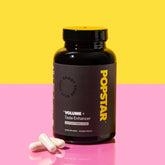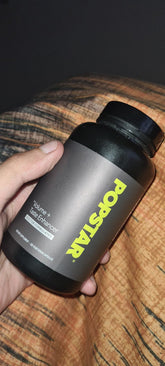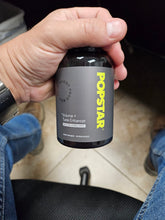Bathtub sex, also referred to as water-based intimacy or aquatic lovemaking, is an intimate activity that takes place in the cozy confines of a bathtub. Many couples are curious about this type of sexual exploration due to its inherent romantic allure, the relaxation offered by warm water, and the satisfying sensory experience provided by the gentle embrace of the tub. In this article, we delve into the definition of bathtub sex, its benefits, potential risks, preparation tips, popular positions, and answers to frequently asked questions. By the end, you will have a good understanding of how to approach this form of intimacy, especially from a men’s health perspective, safely and enjoyably.
Table of Contents
- Definition and Overview
- Benefits and Considerations
- Safety Tips
- Preparation Guide
- Positions and Techniques
- Hygiene and Health Concerns
- Enhancing the Experience
- Frequently Asked Questions
- Final Thoughts
- References
Definition and Overview
Bathtub sex is a form of water-based intimacy where partners engage in sexual activity while submerged (at least partially) in a bathtub. For some couples, it embodies an inherently romantic, spa-like scenario. The warmth of the water can help muscles relax, making the experience sensually comforting. This environment often fosters a sense of closeness and heightened sensations thanks to the enveloping warmth and the splash or trickle of water.
Although bathtub sex may sound straightforward, it involves particular considerations that differentiate it from standard bedroom intimacy. The presence of water can affect body temperature, lubrication, friction levels, and even the angles at which couples can comfortably position themselves. Additionally, there may be greater risk of slipping or sustaining minor injuries due to the slick surfaces commonly found in a tub.
Beyond the physical realm, bathtub sex can also serve a psychological function. The unique setting lends itself to an atmosphere of relaxation and a break from routine, which can help individuals feel mentally at ease, sometimes paving the way for more adventurous sexual exploration. For men, specifically, the calm environment may help reduce performance anxiety or stress, resulting in a more positive experience.
Benefits and Considerations
There are a range of benefits and considerations associated with bathtub sex. While it is often touted as an enjoyable alternative to traditional intimacy, it has unique aspects one should examine closely.
- Relaxation and stress relief: The warmth of the water can help loosen tight muscles and soothe the mind. Many couples find a water-based atmosphere fosters intimate, romantic bonding.
- Heightened sensation: Due to buoyancy, partners may experience different levels of pressure and stimulation. The water can create an unusual sensation that feels invigorating on the skin.
- Versatility: Tubs vary in size and shape. While smaller bathtubs may be challenging, even a modest-sized tub lets you explore certain sensual touches and positions. Larger, jacuzzi-style tubs give you more freedom to move and experiment.
However, there are considerations to keep in mind:
- Friction and lubrication: Water can wash away natural lubrication, sometimes leading to discomfort or dryness. Men and their partners may need to use water-resistant lubricants to reduce friction.
- Temperature control: Sitting in warm water for prolonged periods can lead to fluctuations in body temperature. Plus, water that’s too hot may be a risk factor for overheating or scalding.
- Potential for slipping: The tub’s surface is often slick. Being mindful of safety measures is essential in preventing falls or injuries.
- Time constraints: Warm water can cool down fast or lose its initial comfort, so you may need to replenish the heat or adjust water temperature to maintain a comfortable environment.
Safety Tips
When it comes to bathtub sex, safety should be a central concern. The combination of water, smooth surfaces, and steamy conditions can pose risks. Below are essential safety tips:
- Use non-slip mats: Placing a rubber mat or non-slip decals inside the tub helps prevent accidental slips or falls. Safety is vital to ensure you can focus on pleasure, not hazards.
- Check water temperature: Warm water can be relaxing, but overly hot water may cause dizziness or scalding, especially for individuals with sensitive skin. A comfortable temperature is usually between 98°F (37°C) and 104°F (40°C).
- Stay hydrated: Steamy conditions can cause sweating and mild dehydration. Keep water nearby to sip if needed, especially if you are in a warm tub for a lengthy period.
- Limit alcohol intake: Alcohol can impair judgment and cause dehydration. It’s wise to limit—or avoid—alcohol or other substances that might compromise safety.
- Be cautious of electrical devices: Avoid placing any electronic device near the tub. Mixing water and electricity is dangerous.
- Avoid prolonged exposure: Soaking in very hot water for too long may contribute to dizziness or decreased blood pressure. Listen to your body and get out if you feel uncomfortable.
Adhering to these recommendations can reduce the chances of accidents. Taking care of fundamental safety concerns helps ensure a more relaxed, fulfilling experience.
Preparation Guide
Like any intimate experience, bathtub sex often benefits from thoughtful preparation. Before stepping into the water, it’s helpful to consider certain steps that can enhance comfort and pleasure for both partners:
- Clean the tub: Hygiene is crucial. Thoroughly clean and rinse the bathtub to eliminate soap scum, harsh chemical residues, or other irritants that could cause skin discomfort or infection.
- Gather necessities: Place towels, bath pillows, water-resistant lubricants, and any bath-related items (e.g., bubble bath or bath salts) within easy reach, so you won’t need to exit the tub mid-intimacy.
- Optimize ambience: Dim the lights or add candles (safely placed away from water), and consider low-volume music to set a romantic mood. Soft, calming scents from essential oils or scented candles can help you relax.
- Check water level: Setting the right water level is vital. Too much water may cause excessive overflow once both partners are in the tub. Too little water can reduce the benefits of buoyancy. Find a balance that keeps you warm, safe, and comfortable.
- Temperature adjustments: Pre-fill the tub with warm water and regularly check the temperature. If you have a partner who prefers slightly cooler or warmer water, negotiate the ideal temperature before you begin.
- Footing and stability: Ensure that the area around the tub is dry if you need to step out. Stabilizing yourself on small handrails or the tub edge can prevent slips while moving.
Setting the stage properly enables you and your partner to focus on the sensual aspects of the experience without being distracted by potential discomfort or safety issues.
Positions and Techniques
One of the challenges of bathtub sex is navigating the smaller, slippery space. Nonetheless, there are several positions and techniques to explore. Each option comes with varying levels of comfort, depth of penetration, and ease of movement. Here are some you may consider:
- Face-to-Face Seated Position: Both partners sit facing each other, legs intertwined. This position promotes intimacy through direct eye contact and gentle closeness. It works best in larger tubs but is still feasible in smaller units with some adjustments.
- Spooning or Side-by-Side: One partner sits behind the other, allowing for gentle thrusts and easy cuddling. This position is more relaxing and comfortable, especially if you have limited space. It also helps maintain balance.
- Kneeling Embrace: If the tub is deep enough, one partner can kneel between the other’s legs. Adequate cushioning and stability are needed to prevent strain on the knees or any slipping.
- Edge-of-Tub Variation: For certain activities, one partner can stay seated on the tub’s rim while the other remains in the water. This position can ease the transition from water to more direct contact, though it requires heightened attention to grip and balance.
Experimenting carefully with positioning can help you discover the angles and approaches that work best for you. Remember, comfort should be the top priority, especially as water changes friction dynamics.
Hygiene and Health Concerns
When discussing men’s health—and sexual health in general—it’s essential to consider hygiene and possible medical risks. Although bathtub sex can be a fun bonding experience, the warm, moist environment can potentially facilitate bacterial or yeast growth if you aren’t mindful of cleanliness.
- Possible infections: Prolonged exposure to poorly maintained water can heighten the risk of urinary tract infections (UTIs) and yeast infections. Ensuring that both the tub and your body are clean significantly reduces that risk.
- Water chemicals: If your water is heavily chlorinated or you use strong cleaning agents, these additives can irritate sensitive skin areas. Rinse thoroughly post-bath, or consider gentler cleaning products and bath salts designed for sensitive bodies.
- Condom usage: Contrary to popular misconceptions, using condoms is still advisable even in water. However, water can sometimes compromise the latex or increase lubrication issues. Explore water-resistant or water-friendly lubricants, and ensure proper condom application.
- Dryness and micro-tears: Water often strips away natural lubrication, leading to increased friction that may cause micro-tears in delicate tissues. Such tears can raise the risk of infection. Lubricant reapplication can help prevent dryness-related issues.
- Temperature extremes: Extremely hot water can affect blood pressure or exacerbate pre-existing conditions. Men with heart issues or high blood pressure should consult a healthcare professional for personalized advice before indulging in hot water play.
Being proactive about hygiene and health measures is key. Pay attention to how your body reacts, and if any sign of infection or prolonged discomfort arises, consult a medical professional.
Enhancing the Experience
Beyond basic safety and comfort, there are plenty of ways to enhance the enjoyment of bathtub sex. Small adjustments or added touches can make the experience more memorable:
- Temperature play: Experiment with varying water temperatures or introduce cold compresses for a tingling sensation against the warm water. Some couples find the contrast thrilling and stimulating.
- Sensory elements: Use aromatherapy with soft, gentle scents such as lavender or jasmine. Consider playing soft music in the background for a full sensory getaway.
- Bath accessories: Bath salts, bubbles, or even bath bombs designed for sensitive skin can make the environment more luxurious. Choose products that won’t disrupt the body’s pH or cause unwanted irritation.
- Communication: This is crucial. Share feedback about what feels good, what’s uncomfortable, or when you need to shift positions. Transparent communication deepens intimacy and reduces misunderstandings.
- Experiment with foreplay: Use the bathtub environment for slow, methodical foreplay. Gentle massages, soaping each other’s bodies, and teasing touches can ignite anticipation and increase pleasure.
Personalize these ideas to match your preferences. Every couple is different, and discovering what heightens your joy in the tub is part of the fun.
Frequently Asked Questions
Is bathtub sex risky for men’s sexual health?
Generally, bathtub sex isn’t harmful if proper safety and hygiene measures are followed. However, water-based intimacy can increase the likelihood of irritation or infection if the tub isn’t cleaned well or if natural lubrication is inadequate. For some men who are predisposed to urinary tract or skin infections, the additional moisture and potential bacteria in bathwater can pose a concern. Prioritizing cleanliness, using water-friendly lubricants, and monitoring your body’s reactions significantly reduce risks.
Does water act as a natural lubricant?
Despite assumptions, water is not an effective lubricant for sexual activity. In fact, it typically washes away the body’s natural lubricants, sometimes leading to more friction. For men and their partners, dryness can quickly become an issue in a tub. That’s why water-resistant lubricants formulated with silicone or specialized ingredients can be especially helpful, staying intact under water and reducing discomfort.
Is it necessary to use a condom in a bathtub?
Condom use is recommended whenever there’s a risk of sexually transmitted infections (STIs) or unplanned pregnancy. Bathtub sex doesn’t negate those risks. However, keep in mind that condoms may be more prone to slipping off or tearing in a water environment. Selecting the correct size and type of condom, and using a compatible lubricant, can help ensure protection remains intact.
How can couples minimize the risk of slipping or falling?
Installing non-slip mats or adhesive grips inside the tub significantly lowers slippage risks. Additionally, place a bath mat on the floor outside the tub, ensuring that stepping in and out is more secure. Grab bars are another excellent safety feature. Approach each movement with caution, especially if you shift positions mid-activity.
Are there concerns regarding hot water and sperm health?
Excessive heat can affect sperm quality and quantity in men if exposure is frequent or extended. A single occasion of warm water immersion typically carries minimal risk, but men who are trying to conceive may wish to limit prolonged soaks in very hot baths. Consulting a healthcare provider can offer personalized guidance.
What if the tub is too small for two people?
A smaller bathtub can still accommodate intimate moments, though you may have to get more creative with positioning. You might spend more time engaged in foreplay, kissing, or mutual stimulation rather than attempting more physically demanding positions. If you find the tub truly cramped, consider alternative water-based settings such as a larger jacuzzi or spa tub, or simply use the water environment for initial intimacy before transitioning to a more spacious area.
Is bathtub sex advisable for men with sensitive skin or eczema?
Men prone to skin issues may need to be cautious with prolonged water exposure, especially if bathwater contains harsh chemicals or fragrances. Using fragrance-free, sensitive-skin-friendly bath products can help mitigate irritation. It’s also wise to moisturize soon after bathing to replenish the skin’s protective barrier. If you have severe eczema or other skin conditions, consulting a dermatologist before engaging in extended tub time is advisable.
Does bathtub sex increase the risk of getting a urinary tract infection?
Any sexual activity can potentially introduce bacteria to the urethra. Although bathtub sex may heighten that risk slightly because of the water environment, the likelihood is manageable if you maintain good hygiene practices. Thoroughly cleaning the tub before use and showering afterward (to rinse off any lingering bacteria) both help reduce this risk. Drinking water before and after sexual activity and urinating soon after can also help flush out bacteria.
How long can a couple safely stay in the tub?
The limit varies depending on the water temperature, individual comfort, and health status. Most experts advocate short intervals to prevent excessive dryness of skin or dangerously high body temperature. If you enjoy extended soak sessions, taking breaks to add warm water or to cool down reduces discomfort and any potential hazards. Always listen to your body—if you feel faint or overly warm, it’s time to step out.
What if the water starts to cool down quickly?
Warmth is part of the indulgence of bathtub sex. When the water begins to cool, it can lessen the overall comfort. One solution is to carefully top up the tub with warm water if feasible. Another is to plan your intimate session in a shorter, more intense window. If your tub features built-in temperature controls or a continuous warm-water inflow, you can keep conditions ideal for longer, but always do so with caution to avoid burns or dangerous temperature spikes.
Final Thoughts
Bathtub sex can be a novel and deeply satisfying way to connect intimately with a partner—especially when you pay attention to safety, comfort, and hygiene. By familiarizing yourself with the appropriate precautions, the importance of effective lubrication, and the value of open communication, you can create a memorable experience that goes beyond a standard romantic bath. If you have personal health concerns or known risks, consult a healthcare professional for advice tailored to your situation. With the right mindset and preparation, bathtub sex can become a valuable form of aquatic romance that enriches your intimacy.
References
- National Library of Medicine. (n.d.). Preventing Slips in the Bathroom. Retrieved from https://www.ncbi.nlm.nih.gov/
- Mayo Clinic. (n.d.). UTI Prevention Tips. Retrieved from https://www.mayoclinic.org/
- Cleveland Clinic. (n.d.). Men’s Sexual Health: Best Practices. Retrieved from https://my.clevelandclinic.org/




















































